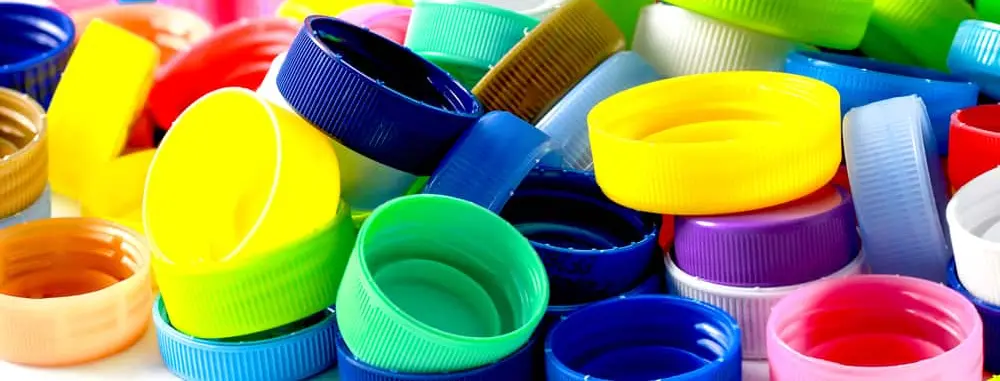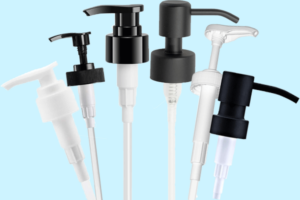Bạn có biết nắp chai nhựa của bạn có thể có giá trị hơn bạn nghĩ? Chào mừng đến với thế giới sinh lợi của việc tái chế nắp chai nhựa, nơi không chỉ có thể biến nắp chai thành tiền mặt, nhưng xu hướng ngày càng tăng. Chúng ta sẽ khám phá tiềm năng chưa được khai thác của việc tái chế nắp chai nhựa và cách nó có thể mang lại lợi ích cho môi trường và ví tiền của bạn.
Khi mọi người nhận thức rõ hơn về tác động tiêu cực của nhựa đối với môi trường, tái chế là quan trọng hơn bao giờ hết. Tuy nhiên, Nhiều người không biết nắp chai nhựa cũng có thể tái chế. Những mảnh nhựa nhỏ này tưởng chừng như không đáng kể, nhưng nếu tái chế đúng cách, họ có thể có tác động lớn.
Bằng cách tái chế nắp chai nhựa, bạn có thể giúp giảm lượng rác thải nhựa thải ra bãi rác và đại dương. Vì vậy, thay vì vứt bỏ nắp chai, xem xét việc thu thập chúng và biến chúng thành tiền mặt. Bạn sẽ không chỉ làm phần việc của mình cho môi trường, nhưng bạn cũng có thể ngạc nhiên khi biết mình có thể kiếm được bao nhiêu tiền từ những việc đơn giản như nắp chai nhựa.

Tầm quan trọng của việc tái chế nắp chai nhựa
Trong thế giới hiện đại, tiêu thụ chai nhựa đã trở thành một phần không thể thiếu trong cuộc sống hàng ngày. Trong khi nỗ lực tái chế chai nhựa nhận được sự quan tâm rộng rãi, tầm quan trọng của tái chế nắp chai nhựa thường bị bỏ qua. Bài viết này nhằm mục đích làm sáng tỏ tác động môi trường của chất thải nắp chai nhựa và nêu bật tầm quan trọng của việc kết hợp tái chế nắp chai vào các hoạt động bền vững của chúng ta.
Tác động của nắp chai nhựa tới môi trường:
Nắp chai nhựa thường được làm bằng polypropylen hoặc polyetylen và có thể gây ô nhiễm môi trường nghiêm trọng. Nếu không được xử lý hoặc tái chế đúng cách, những chiếc mũ này kết thúc ở bãi rác và đại dương, gây ra mối đe dọa đối với động vật hoang dã và hệ sinh thái biển. Kích thước nhỏ của chúng khiến chúng đặc biệt nguy hiểm vì chúng có thể bị động vật ăn phải., gây thương tích hoặc tử vong.
Ô nhiễm vi nhựa:
Nắp chai nhựa bị hỏng theo thời gian, chúng góp phần làm gia tăng vấn đề ô nhiễm vi nhựa. Những hạt nhỏ này, ít hơn 5 milimét, có thể thấm vào đất và nước, tác động đến hệ sinh thái và có khả năng xâm nhập vào chuỗi thức ăn. Bằng cách tái chế nắp chai, chúng ta có thể giảm lượng vi nhựa thải ra môi trường và bảo vệ sức khỏe của hành tinh.
Tiết kiệm tài nguyên:
Tái chế nắp chai nhựa không chỉ ngăn ngừa tác hại đến môi trường mà còn tiết kiệm tài nguyên quý giá. Sản xuất nắp chai nhựa tiêu tốn nhiều dầu và năng lượng. Bằng cách tái chế nắp chai, chúng tôi giảm nhu cầu về nguyên liệu thô mới, do đó làm giảm dấu chân môi trường liên quan đến hoạt động sản xuất của họ.
Giảm chất thải và kinh tế tuần hoàn:
Việc tích hợp tái chế nắp chai nhựa vào hoạt động quản lý chất thải của chúng tôi sẽ thúc đẩy nền kinh tế tuần hoàn. Chúng ta không nên nghĩ mũ là đồ dùng một lần, mà là thứ có thể biến thành tài nguyên có giá trị thông qua việc tái chế. Cách tiếp cận này giảm thiểu lượng rác thải được đưa đến bãi chôn lấp, khuyến khích tiêu dùng có trách nhiệm, và giúp tạo ra một hệ thống bền vững hơn và tiết kiệm tài nguyên hơn.
Ô nhiễm vi nhựa:
Nắp chai nhựa bị hỏng theo thời gian, chúng góp phần làm gia tăng vấn đề ô nhiễm vi nhựa. Những hạt nhỏ này, ít hơn 5 milimét, có thể thấm vào đất và nước, tác động đến hệ sinh thái và có khả năng xâm nhập vào chuỗi thức ăn. Bằng cách tái chế nắp chai, chúng ta có thể giảm lượng vi nhựa thải ra môi trường và bảo vệ sức khỏe của hành tinh.
Làm thế nào để chúng ta tái chế nắp chai nhựa trong cuộc sống hàng ngày?
Có nhiều cách tái chế nắp chai nhựa, đây là một số thực tiễn phổ biến:
- Tái sử dụng quảng cáo: Sau khi thu gom và làm sạch nắp chai nước giải khát đã qua sử dụng chúng ta sử dụng hàng ngày, chúng có thể được sử dụng để làm nhiều đồ thủ công khác nhau, chẳng hạn như bình hoa, miếng dán tủ lạnh, bông tai, vân vân.
- Phân loại tái chế: Phân loại và tái chế nắp chai nước giải khát đã qua sử dụng để tránh lãng phí hoặc gây ô nhiễm môi trường. Trạm tái chế ở một số khu vực có thể tiếp nhận rác thải nhựa. Bạn có thể tham khảo trung tâm tái chế rác thải hoặc trung tâm xử lý rác thải tại địa phương để tìm hiểu về các chính sách và phương pháp liên quan đến tái chế rác thải.
- Việc bán hàng: Một số công ty tái chế rác thải có thể thu thập nắp chai nước giải khát đã qua sử dụng và tái chế hoặc bán chúng.. Bạn có thể kiểm tra với các cửa hàng tái chế ở địa phương để xem họ có tái chế nắp nhựa không.
- Nhà máy chế biến: Nếu số lượng tương đối lớn, bạn có thể cân nhắc bán nó cho một số nhà máy sử dụng tài nguyên tái tạo để xử lý chuyên nghiệp. Những nhà máy này đập nắp chai thành từng mảnh rồi làm sạch, màu sắc riêng biệt, tạo thành hạt, vẽ và các quá trình khác, rồi biến chúng thành thành phẩm như lưới che nắng.
Dù bạn chọn phương pháp nào, giảm thiểu sử dụng nhựa và phân loại rác thải để bảo vệ môi trường.
Các loại nắp chai nhựa có thể tái chế
- Polyetylen (Thể dục): Một loại nhựa thông thường có trọng lượng nhẹ, linh hoạt, và minh bạch. Nó thường được sử dụng để làm túi nhựa, bọc nhựa, nắp chai, chai, vân vân.
- Polypropylen (PP): Nhựa cứng và bền, thường được sử dụng để làm thùng, chai, thùng chứa, vân vân., và cũng có khả năng chịu nhiệt tốt và chống ăn mòn hóa học.
- Polystyrene (Tái bút): Là loại nhựa xốp được sử dụng phổ biến với ưu điểm nhẹ, cách nhiệt, hấp thụ sốc, và chi phí thấp. Nó thường được sử dụng để làm hộp giòn hơn, hộp dao kéo, cốc giữ nhiệt, vân vân.
- Polyetylen terephthalat (THÚ CƯNG): Là loại nhựa trong suốt thông dụng với ưu điểm nhẹ, minh bạch, chịu nhiệt độ cao, và chống ăn mòn hóa học. Nó thường được sử dụng trong sản xuất chai, bao bì thực phẩm, sản phẩm sợi, vân vân.
Ngoài ra, một số nắp chai nhựa có thể được tái chế, chẳng hạn như mũ nhựa PP và mũ nhựa PET được sản xuất bởi nhà sản xuất nắp nhựa. Mũ nhựa PP có khả năng chịu nhiệt, chịu va đập tốt, và có thể được sử dụng để sản xuất các sản phẩm nhựa sau khi tái chế. Mũ nhựa PET cũng có thể được tái sử dụng sau khi tái chế do trọng lượng nhẹ, minh bạch, và chịu nhiệt độ cao.
Lợi ích của việc tái chế nắp chai nhựa
Tái chế nắp chai nhựa mang lại nhiều lợi ích và tác động tích cực đến môi trường, xã hội:
- Bảo vệ tài nguyên: Nắp chai nhựa thường được làm bằng nhựa như polypropylene (PP) hoặc polyetylen (Thể dục), nguồn tài nguyên hóa dầu có hạn. Thông qua tái chế, nhu cầu về nguyên liệu thô mới giảm, do đó giúp bảo tồn tài nguyên thiên nhiên.
- Làm chậm ô nhiễm nhựa: Nắp chai nhựa chưa qua xử lý có thể dễ dàng trở thành một phần gây ô nhiễm môi trường, đặc biệt là ở đại dương và vùng biển. Thông qua tái chế, khả năng những loại nhựa này kết thúc ở các bãi chôn lấp hoặc vùng nước sẽ giảm đi, giúp giảm thiểu tác động tiêu cực của nhựa đối với hệ sinh thái.
- Bảo tồn năng lượng: Sản xuất nắp chai nhựa tiêu tốn nhiều năng lượng, bao gồm các nguồn tài nguyên không thể tái tạo như dầu mỏ. Thông qua tái chế, tiêu thụ năng lượng có thể được giảm, mở đường cho các phương pháp sản xuất bền vững hơn.
- Thúc đẩy nền kinh tế tuần hoàn: Tái chế, tái sử dụng nắp chai nhựa là nguyên tắc cốt lõi của nền kinh tế tuần hoàn. Bằng cách tái chế nắp chai bỏ đi thành sản phẩm mới, tuổi thọ của nhựa được kéo dài và nhu cầu về nhựa mới giảm.
- Cơ hội việc làm: Sự phát triển của ngành tái chế nắp chai nhựa đã tạo ra cơ hội việc làm, liên quan đến việc thu thập, sắp xếp, dọn dẹp, xử lý lại và các liên kết khác, mang lại nhiều cơ hội việc làm cho cộng đồng.
Tương lai của việc tái chế nắp chai nhựa
Trong khi phải đối mặt với thách thức nghiêm trọng của ô nhiễm nhựa, triển vọng tương lai của việc tái chế nắp chai nhựa rất tươi sáng. Bằng sự làm việc chăm chỉ và đổi mới, chúng ta có cơ hội thay đổi cách xử lý rác thải nhựa trước đây và tạo ra một tương lai bền vững hơn. Tiến bộ công nghệ, hỗ trợ chính sách, nhà sản xuất nắp nhựa sử dụng vật liệu có thể tái chế và phân hủy để sản xuất sản phẩm và sự tham gia của công chúng vào việc phát triển ngành tái chế nắp chai nhựa. Việc sử dụng rộng rãi nắp chai nhựa làm nguyên liệu thô bền vững, cũng như hợp tác quốc tế trên phạm vi toàn cầu nhằm giảm thiểu tác động tiêu cực của rác thải nhựa tới môi trường. Mọi người đều có thể tham gia vào sự thay đổi này và cùng nhau làm việc để tạo ra một môi trường trong sạch, tương lai xanh và bền vững bằng cách thay đổi hành vi của người tiêu dùng và nâng cao nhận thức về môi trường.




